|
Mystical Places
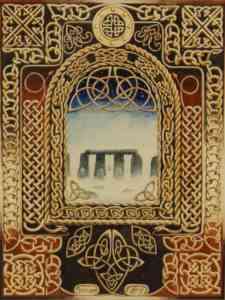 Stonehenge is a megalithic site located on the Salisbury Plain in Wiltshire, U.K. There have been theories that the stones of Stonehenge are arranged in astronomical alignment to the sun and moon and may have been constructed as a sort of astronomical observatory. Stonehenge is a megalithic site located on the Salisbury Plain in Wiltshire, U.K. There have been theories that the stones of Stonehenge are arranged in astronomical alignment to the sun and moon and may have been constructed as a sort of astronomical observatory.In the 1100s, Henry de Huntingdon, a clergyman and noble, revived public interest in Stonehenge. He referred to Stonehenge as Staneges and pondered how the gigantic stones could have been transported there. John Aubry discovered small holes that were later called Aubry Holes after him. Aubrey apparently believed that Stonehenge was probably once used as a Druidic temple. British-born professor at Boston University, Gerald S. Hawkins, utilized a computer to study the layout of Stonehenge and apparently concluded that there was a correlation with the placement of the stones and the rising of the sun and moon. Stonehenge may have been an astronomical calendar.  There have been many theories as to who actually built Stonehenge. Some have suggested it was built by ancient Romans. Others are convinced it was built by ancient Greeks. Still other people think it was built by the Druids themselves. The Druids 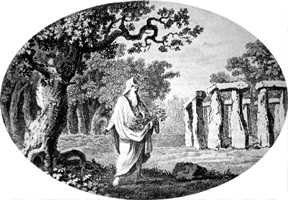 The Druids were allegedly Celtic priests or monks. The word Druid may originate with the word meaning "knowing the oak tree",and the Druids allegedly performed their rites and rituals near oak trees and near water. Little history of the Druids was recorded so there is scant information about them today. Some believe that the Druids were learned astronomers who also practiced magic and herbal medicine and performed ritual sacrifices, both animal and it has been alleged, human. According to ancient accounts the Druids prophecied and divined by augury.
 Though legend has it that the Druids used Stonehenge as one of their sites for rituals, there seems to be no clear evidence that the Druids utilized Stonehenge. However, some people believe that the Druids did use Stonehenge.  Like Avebury (see below), the circle of Stonehenge is believed by some to contain powerful earth energies and there have been reports that unusual lights have been seen by observers. There is a legend that the wizard Merlin magically transported the bluestones to Stonehenge. The bluestones apparently weigh up to 4 tons each. 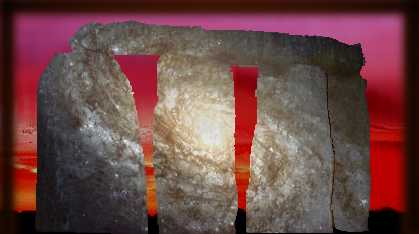 Avebury is in Wiltshire in the south of England. It is a megalithic site larger than Stonehenge. Some believe that there are powerful and strange earth energies at Avebury, and that people have reported seeing peculiar and inexplicable lights at night within the stone circles (ghost lights). Remains from burials have been found there, so Avebury may have been a sacred burial ground. Legend has it that on May Eve, girls would sit on the "Devil's Chair" and make a wish. This was allegedly part of a fertility ritual. 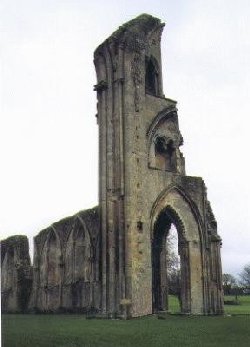 Glastonbury is a ancient sacred site in Britain. It has been theorized to be located at the intersection of very powerful ley lines (believed to be invisible lines of earth energy that were mapped out by ancients). There is an abbey at Glastonbury and the Glastonbury Tor, atop which there is the remains of an old church tower. King Arthur of Camelot Legend has it that the reknown King Arthur used the Tor, and that the Tor was one entrance to Annwn, the underworld, or the land of the Fairies. Some have speculated that because Glastonbury was almost an island, it may be the mysterious island of Avalon from the legends of King Arthur. The remains of King Arthur and Queen Guinevere are purportedly buried near the Abbey. The Holy Grail The Chalice Well at the bottom of the Tor is alleged to have been built by ancient Celtic Druids, and the water of the well is believed by some to have magical healing powers. Another legend of Glastonbury is that Joseph of Arimathea tossed the chalice used by Jesus Christ at the Last Supper into the Chalice Well. The Holy Grail or cup was this chalice used by Christ, and it this Grail that is described in Arthurian legends. The Chalice was believed to hold some of Christ's blood. Joseph of Arimathea allegedly founded the first Christian church in Britain at Glastonbury. The search for the Holy Grail has been interpreted as a metaphorical search for truth. (See Prophets and Premonitions--about Merlin). 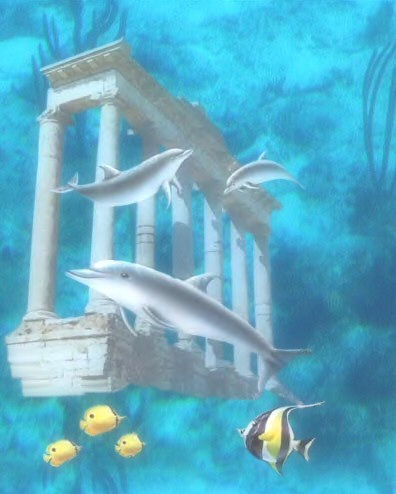 According to legend, the lost continent of Atlantis was named for Poseidon's son Atlas. The inhabitants of Atlantis were reputedly far more technologically advanced than any other cultures of their time. According to some of Edgar Cayce's readings, the Atlanteans may have been more advanced technologically than mankind is today. Plato was a descendant of the philosopher, Solon. Solon maintained that the records of ancient Egyptian priests indicated that before the existence of Egypt, Atlantis occupied the region west of the Straits of Gibraltar, which is located between Portugal/Spain and Morocco. According to Plato, Atlantis held dominion over several islands and part of Libya and parts of Europe. Plato was told that the Atlanteans attempted to subjugate the rest of Europe and the north of Africa and that the Athenians were able to stop the Atlanteans from enslaving the population. Plato claimed that there were elephants in Atlantis, and also, that fruit grew there that sounds like he was describing coconuts. If Atlantis actually existed, then the climate, at least in some region(s), had to have been of a tropical type. If Atlantis was as vast a place as Plato described, then it may well have had quite different climates in its various regions.
From Plato's account of it, Atlantis was divided into ten regions, each region ruled by a king. The Atlanteans apparently devolved from spiritually sound and peaceful people into a warlike and greedy population. Plato (attributed to Timaeus) wrote that: "for this sea which is within the Straits of Heracles is only a harbor, having a narrow entrance, but that other is a real sea, and the surrounding land may be most truly be called a boundless continent. (Doesn't it seem logical that this boundless continent may well have been present day North America & Central/South America?) Now in this island of Atlantis there was a great and wonderful empire which had rule over the whole island and several others, and over parts of the continent, and, furthermore, the men of Atlantis had subjected the parts of Libya within the columns of Heracles as far as Egypt, and of Europe as far as Tyrrhenia (western Italy? or Tuscany? or Greece?)."  Atlantis sunk into the sea (according to some interpretations of Plato's account) in one day, utterly destroyed by a violent cataclysm over 9,500 years B.C. Did such a huge continent or enormous island full of tremendous resources and filled with people who used advanced technology really exist or was Plato story of Atlantis mythology used to warn against greed and avarice and warmongering among themselves and against other peoples? Edgar Cayce's Readings--Information About Atlantis The "Sleeping Prophet" Edgar Cayce maintained (from his readings) that the Atlanteans were of the "red race". Edgar Cayce believed (according to information from his readings) that Atlantis was located between the Gulf of Mexico and the Mediterranean. According to readings by Edgar Cayce, the Atlanteans were so advanced technologically that they used something he referred to as "the Great Crystal" (laser) to operate aircraft. He said the crystal was misused and that led to the destruction of Atlantis. Cayce said that preserved instructions for operating "the Great Crystal" could be found near Bimini, near the Great Sphinx in Egypt (buried in the "Hall of Records"), and in the "Temple of Iltar" in the Yucatan. According to Cayce, one of Atlantis's largest islands, called Poseidia, was located near Bimini and sank into the sea. Surviving Descendants of the Atlanteans? Some have speculated the Basques who live in the Pyrenees region of Spain and France could be descended from the original Atlanteans. The Basques allegedly have a high incidence of type 0 rhesus negative blood, while the surrounding inhabitants of the Pyrenees region, it has been said, generally have RH positive blood. There are said to be obvious linguistic and cultural differences between the Basques and the rest of the population. No one seems to be certain of the origin of the Basques. It has also been suggested that the inhabitants of the Azores Islands off the coast of Portugal are descendants of the Atlanteans. Some people think that Atlantis could have been in the vicinity of Central/South America or that some of the inhabitants of the southern Americas are descendants of the Atlanteans. The Mexican region of Mazatlan could derive its name from Atlantis. Mazatlan is an Indian word for "land of the deer". The name for the tools used by the Indians of Central America and Mexico called atlatls could have derived from the name Atlantis. 'Atl' means 'water'. The Greek story of Atalanta also uses a seeming derivative of the word Atlantis or derived from the name for the ocean itself or from the name of Poseidon's eldest son by Cleito, Atlas. The Aztec Indians allegedly came from an island called Aztlan according to the Aztec legends, and took their name from the land they came from. Some researchers believe that Aztlan was located in the northwestern part of Mexico; however, the Aztecs claimed they came from an island. Some researchers believe Aztlan was nearer the Bahamas. In any case, there is an illuminated manuscript from the Codex Boturini that depicts the Aztec migration and clearly it shows a man leaving an island in a boat. If Aztlan was Atlantis, then at least part of the mystery of the location of Atlantis is not really a mystery at all. Some Native Americans of North America today, as well as some of the Mexican, Central and South American Indians could be descendants of some of the survivors of Atlantis. That would correlate with Edgar Cayce's claim that the Atlanteans were of the "red race". Author Robert B. Stacy-Judd postulated that the Mayans may have been surviving remnants of the Lost Continent of Atlantis. It has been said that the Mayan culture essentially disappeared and many explanations have been offered as to what happened to the Mayan people. Some believe that the Spanish Conquistadores destroyed the Mayan culture. Some believe that other native tribes destroyed them. The Mayans apparently had an advanced culture in some respects, and yet the Spanish invaders recorded (it has been said, with deep disgust and horror) that the Mayans sacrificed human beings to their gods.
The Mayan Calendar "Great Cycle" ends on December 21, 2012 A.D. and is alleged to be when the Mayans believed the world would end. This has led some to speculate that the world is going to end, or at least life as we know it, in 2012, possibly due to some global catastrophe. The Mayans apparently believed that the earth has been inundated by floods, not once, as recorded in the Bible and was recorded by Chaldeans and Sumerians prior to the Hebrews, but four times. The story of the flood occurs in the recorded histories in many parts of the world, in China, in India, and other cultures. Still another researcher has speculated that Atlantis may have been located near present-day Britain and France. (See Atlantis--in Prophets and Premonitions). Glastonbury from Elena's
Stonehenge applet from Trillium Graphics Straits of Hercules by Don Simon from Stock Xchnge Stonehenge from Oliver's Freelance Standing Stones from Magickal Moon Unhenged from Fluid Druid PSP Tube from Eloise Stonehenge (up close) from Stock Xchange Temple from Daz Productions Druids and Mayan Ruins of El Castillo at Chichen Itza from Fenix at Stock Xchng |


